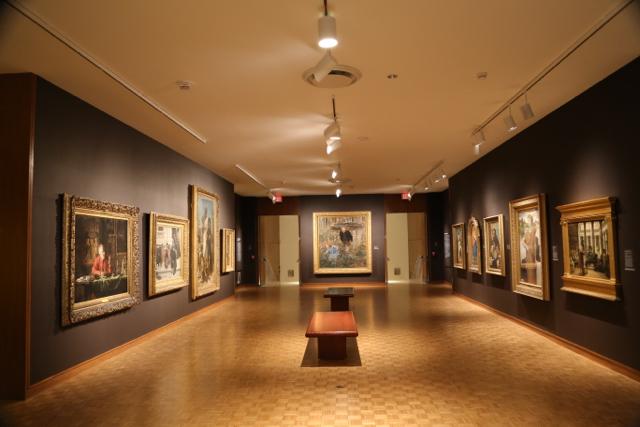Thanks to the Milwaukee Art Museum’s new exhibit, “Visions of France,” you don’t need to take an eight hour flight to experience the French countryside.
According to the MAM website, the exhibit, running from Aug. 5 to Nov. 27, features French artists such as Jean-Baptiste-Camille Corot, Jean-Francois Millet and Charles-Francois Daubigny. Maurice Le Garrec, a French art dealer and publisher, published the 41 piece set.
“Visions of France” is not a cliche picture of Paris and the many tourist attractions located there, yet rather a collection of art that uses the art technique “cliche-verre” to showcase the 19th century French countryside.
“Cliche-verre,” French for glass picture, is photography and drawing combined in order to create a very accurate print,” Alyssa Cullinan, a senior in the College of Arts & Sciences, said. “I looked into it because I noticed how unique and different the pieces were.”
“Cliche-verre” requires an artist to draw or etch a design on a clear glass or film and print the image on paper that is sensitive to light.
Jean-Baptiste-Camille Corot, whose work is featured in the exhibit, is best known for utilizing this technique to the fullest extent.
“I really like Monet’s work and paintings connected to nature at the Chicago Art Institute, so it’s really nice to see French scenes of nature, yet in a new way,” Adam Gottlieb, a junior in the College of Engineering, said. “It’s nice to see the MAM adding a different way to view something similar.”
Home to almost 25,000 works of art, the Milwaukee Art Museum is hosting “Visions of France” within the European Galleries on the second floor.
“It’s cool because going to the MAM is the perfect study break, and they always have new collections or exhibits here and there to look at so you constantly see different works of art,” Cullinan said.
Although tickets are $17 for adults and $15 for students, every first Friday of each month offers free visitation for all. This is an incentive for students to stop by the museum.
“Now I can check it out this Friday and really look more into Corot’s work,” Gottlieb said.

